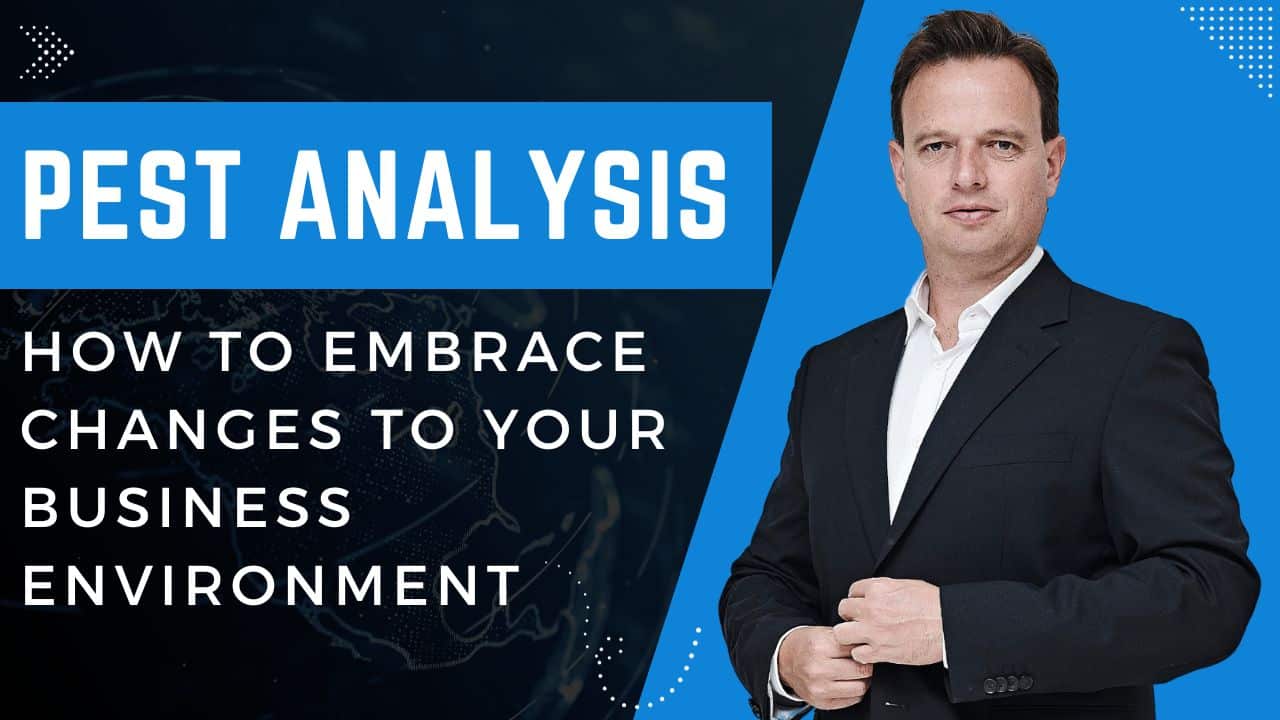No matter how careful you are, things are happening outside your control that will significantly impact your success.
But that’s not as bad as it sounds.
Because significant changes to your business environment can (and likely will) present you with new opportunities to grow - if you’re paying attention.
Today, I’m introducing a workshop to help you spot new opportunities and easily manage impending threats.
Let’s dive in.
Introducing PEST Analysis
Most companies dread changes in their business environment. Fear them. Get utterly paralyzed by the idea of them.
But every change offers new opportunities that move you closer to your desired outcome.
So, how can you turn environmental change into gold?
Get a group of creative go-getters together and run a PEST Analysis workshop.
PEST is an acronym that stands for:
- Political
- Economic
- Socio-Cultural
- Technological
A PEST Analysis workshop helps you better understand the external forces impacting your business so you can seize any opportunities they present.
Here's how to run the workshop, step by step:
Step 1 - Brainstorm changes
First, explore the four areas of PEST – politics, economy, socio-cultural shifts, and technological advancements.
Here are some questions to stimulate the conversation (you can download these handouts for free at the bottom of this page):
Political Changes
- What upcoming elections could impact government policies affecting your organization?
- Who are the potential leaders, and what are their views on policies that might affect your business?
- How does the current or future government approach corporate policy, social responsibility, environmental issues, and customer protection? What changes might be on the horizon?
- Are there any pending legislation or taxation changes that may affect your business?
- How do property rights, the rule of law, corruption, and organized crime influence your operations? Are any changes in these areas coming?
- Will there be increased regulation or deregulation in your industry?
Economic Changes
- Is the economy growing, stagnating, or declining?
- What is the unemployment rate, and how does it impact your ability to hire skilled labour?
- How is disposable income changing among consumers? What can we anticipate in the coming years?
- Do customers and businesses have easy access to credit? How does this affect your organization?
- How is globalization shaping our economic environment?
- Are exchange rates stable or fluctuating significantly?
Socio-Cultural Changes
- What is the growth rate and age profile of the population? How might this shift in the future?
- What are employment patterns like, and how do they vary among different age groups?
- Have recent socio-cultural changes introduced new social attitudes or taboos that could influence your business decisions?
- How do health levels, education standards, and social mobility affect our society? Are these factors evolving?
- Consider how religious beliefs and lifestyle choices shape our population.
Technological Changes
- Could you integrate cutting-edge technologies into your operations for a competitive edge?
- Are there any emerging technologies that may disrupt your industry soon?
- Are your competitors using groundbreaking technologies to redefine their products?
- What areas are governments and educational institutions focusing their research on? Can you leverage this knowledge?
- How have infrastructure changes affected work patterns, such as remote working?
- Seek collaboration or learning opportunities from existing technological hubs.
Step 2 - Brainstorm potential opportunities
Now you've pinpointed the changes in your business, it's time to dive deep and explore the opportunities they bring. Let's get those creative juices flowing!
- What new products could you develop?
- What markets could you conquer?
- Can you streamline any of your processes to supercharge productivity?
Step 3 - Brainstorm potential threats
The next step helps you address challenges and proactively protect your success.
Recognize potential obstacles early to steer clear of trouble or minimize their impact.
For example:
- Is your target market shrinking? Instead of dwelling on it, explore new areas for expansion.
- When technology threatens a product, don't panic! Adapt and embrace change. Look for innovative ways to stay ahead.
- Remember, awareness and preparation are half the battle. Don't let anything hinder your business growth by being proactive instead.
Step 4 - Prioritise & Action Plan
Are any threats so severe they rule out opportunities thought up in Step 2? If so, remove them from the pool.
Run a prioritisation of the viable opportunities. Give each person 3-5 sticky dots and ask them this question:
“Which of these opportunities has the biggest potential to double the size of our business?”
Build action plans for the top 1-3 opportunities.
PEST Analysis v SWOT Analysis
A word of note. PEST Analysis is often confused with SWOT Analysis. They’re different, however, as they focus on other areas.
PEST Analysis looks at "big picture" macro factors that influence your products, market, or a potential new business.
SWOT Analysis explores these factors at a business or product level.
They complement each other nicely and are often used in combination.
Conclusion
Learning to embrace changes to your business environment (as opposed to fearing them) is a unique challenge, no doubt.
But remember this.
Your competition fears change just as much as you do.
So, if you can change your mindset to one that embraces change and even looks forward to it happening, you’ll put yourself at a significant advantage.
Well, that’s it for today.
I hope you enjoyed it.

